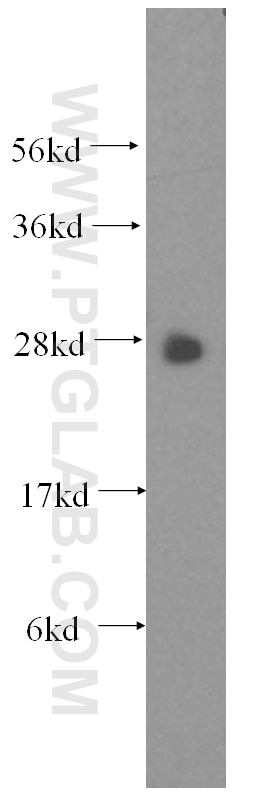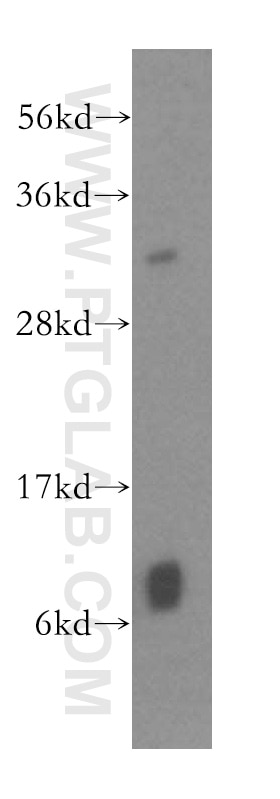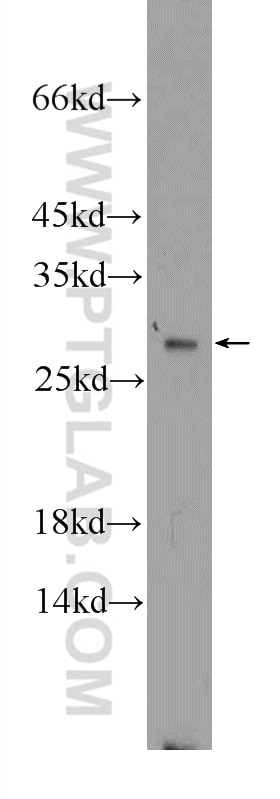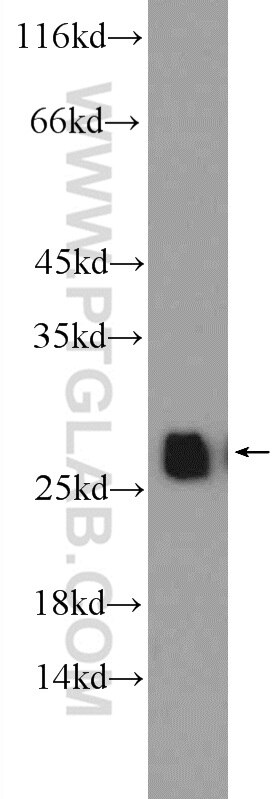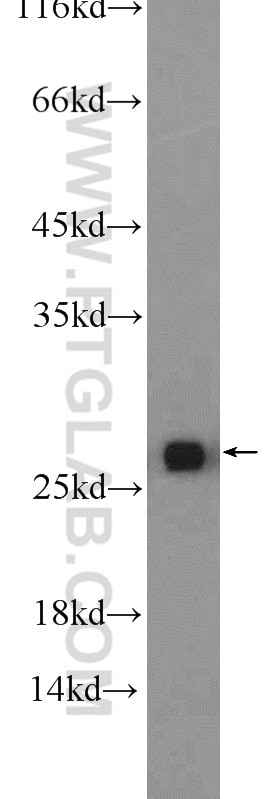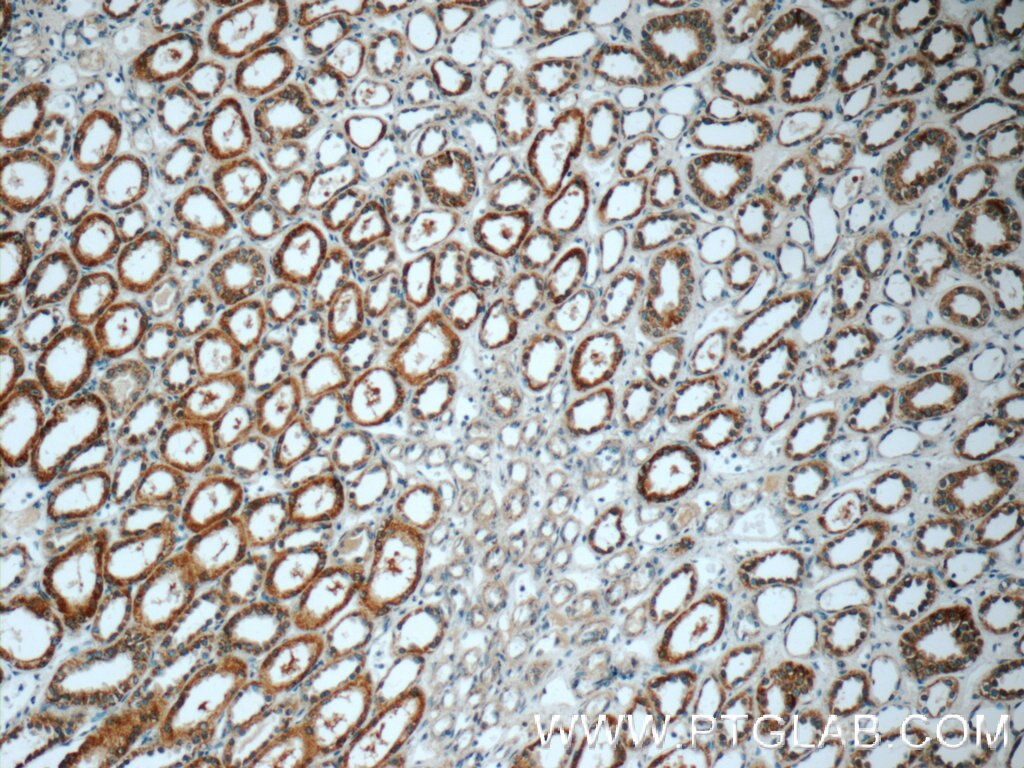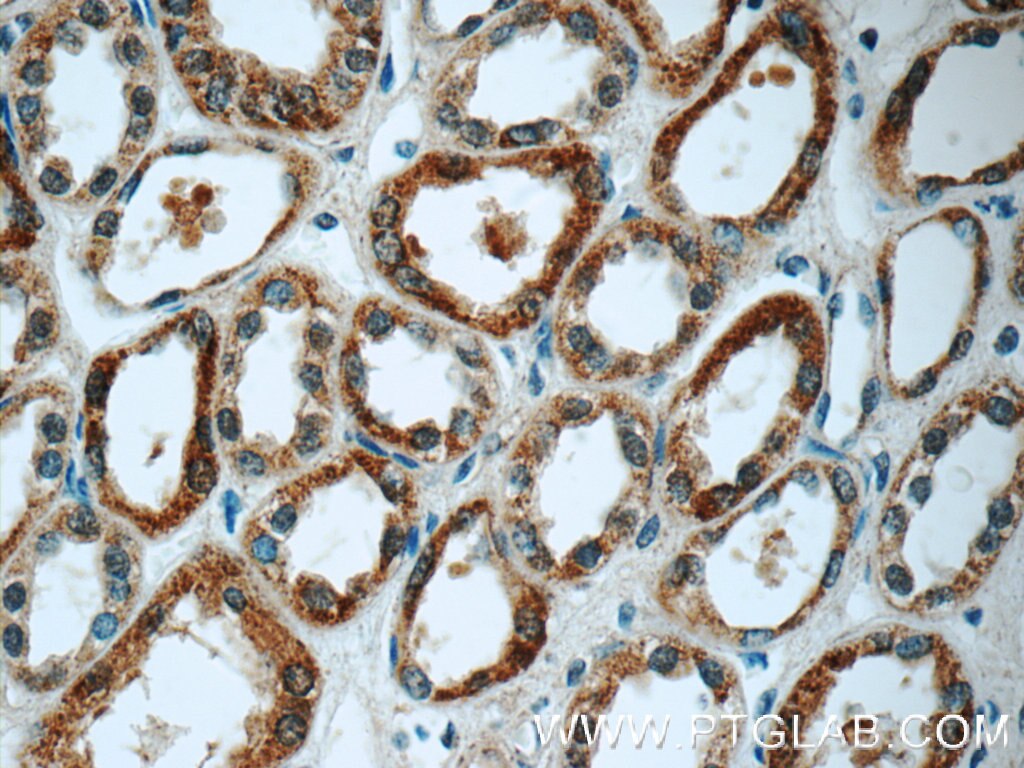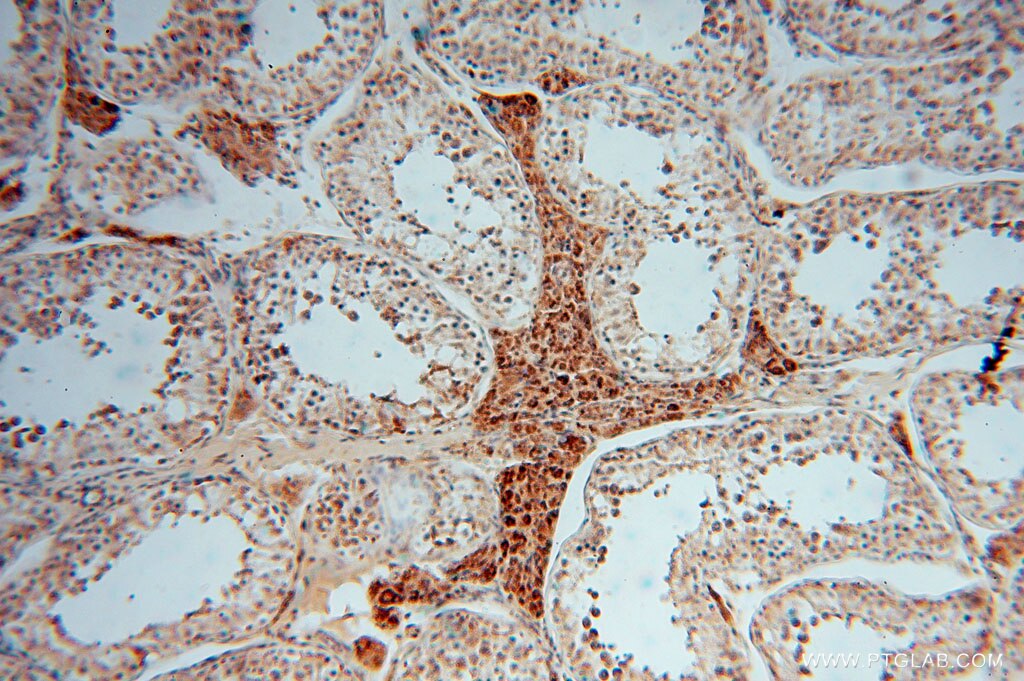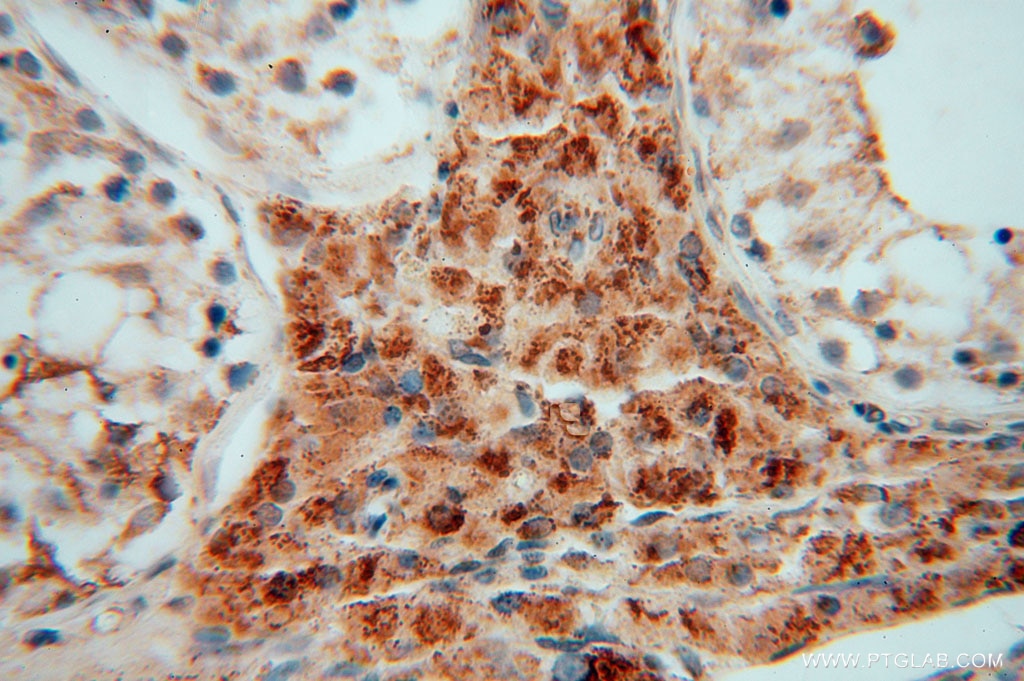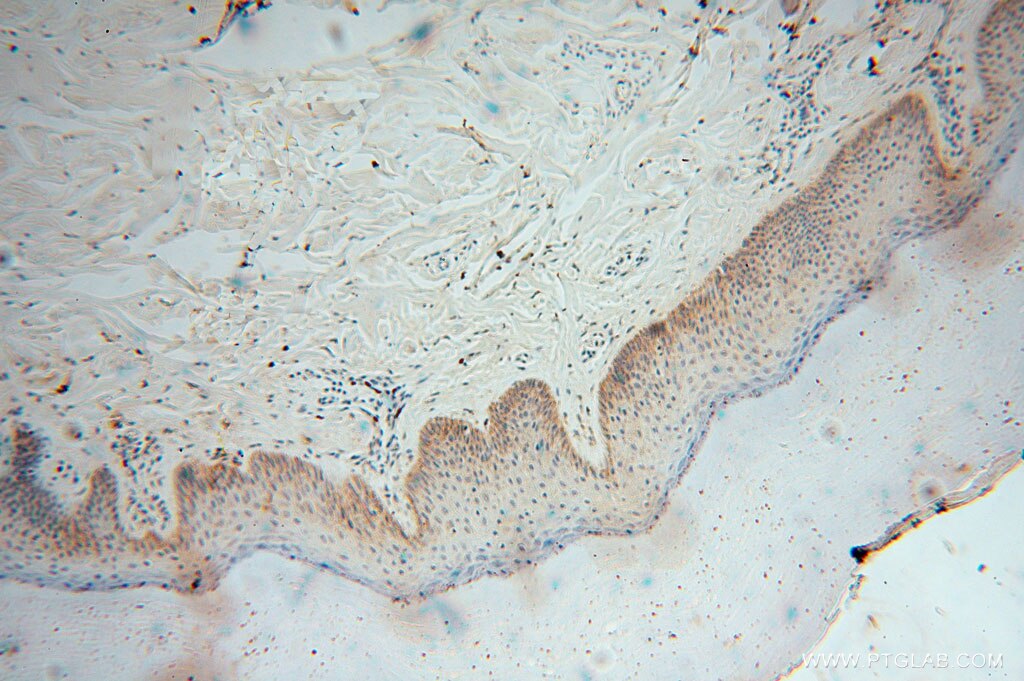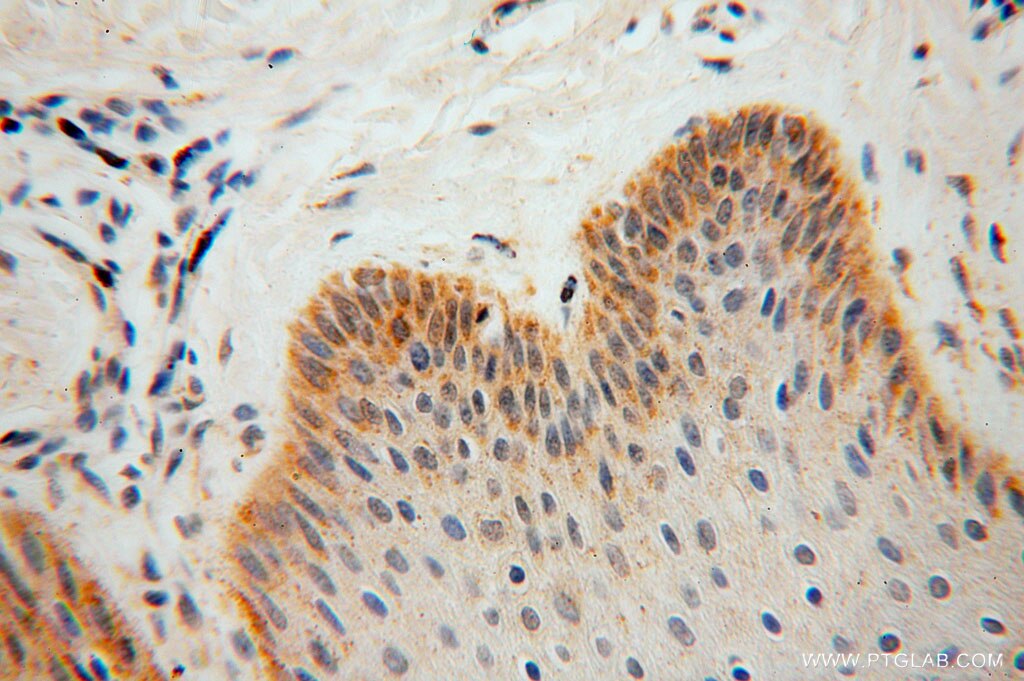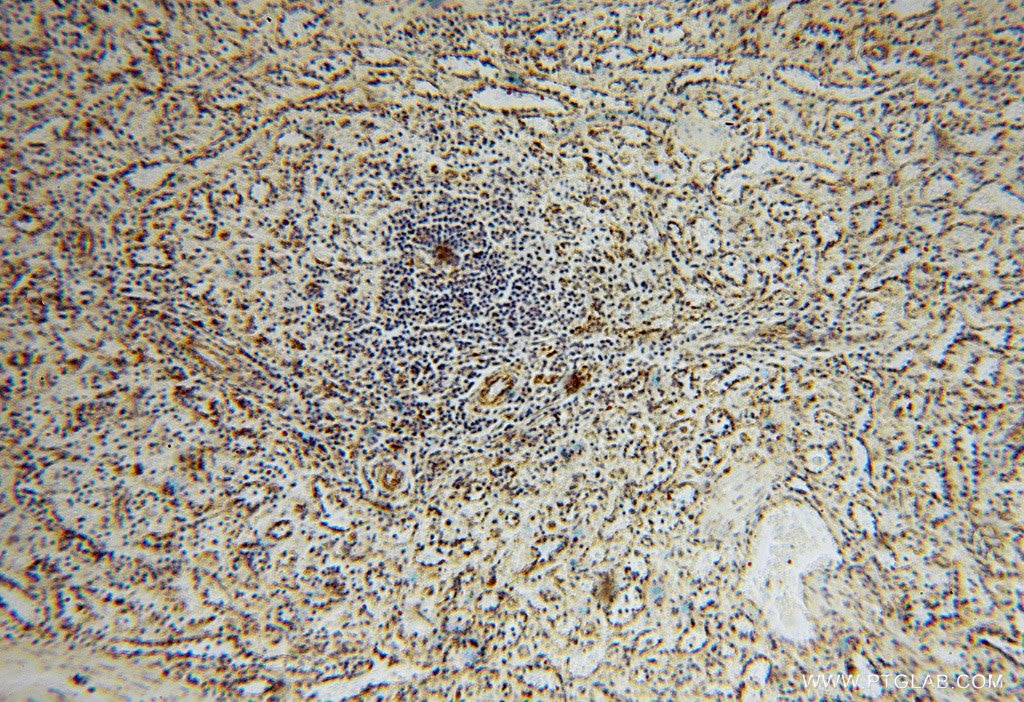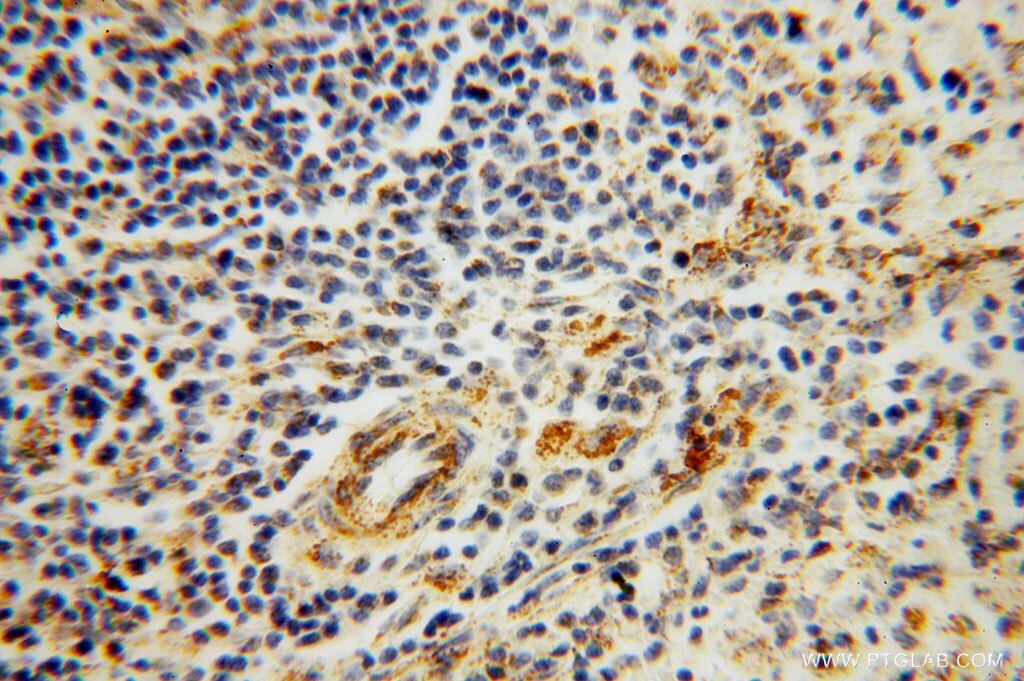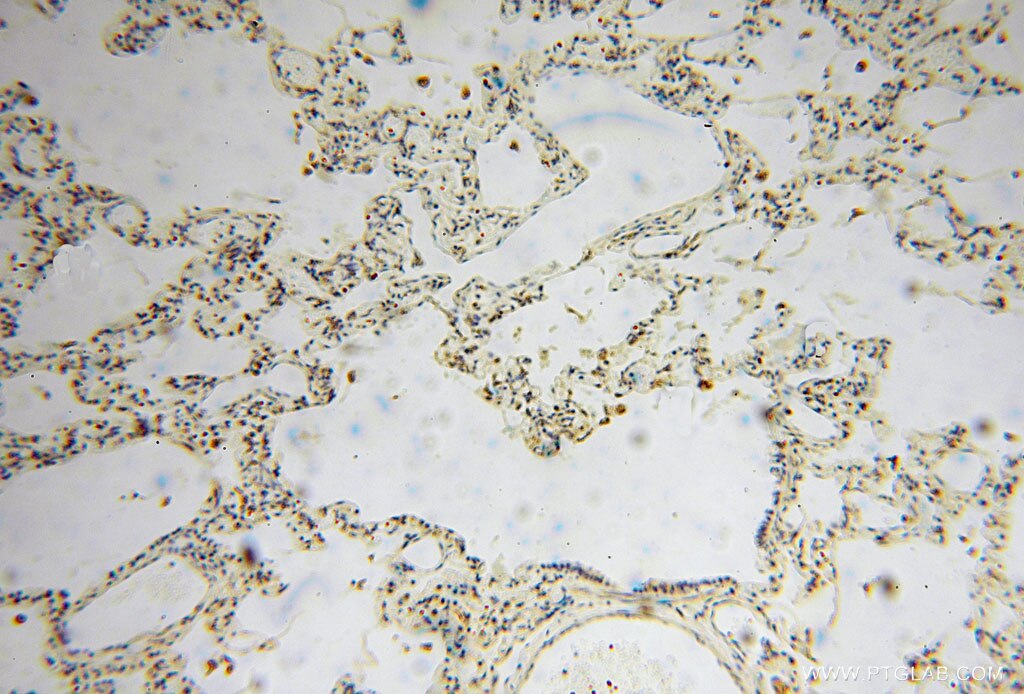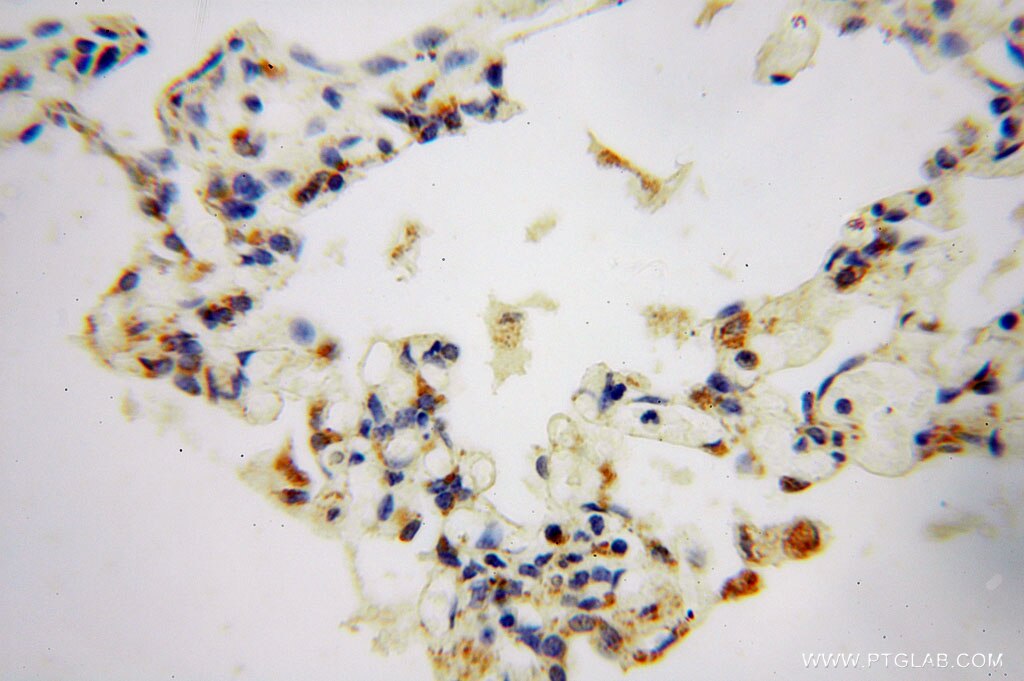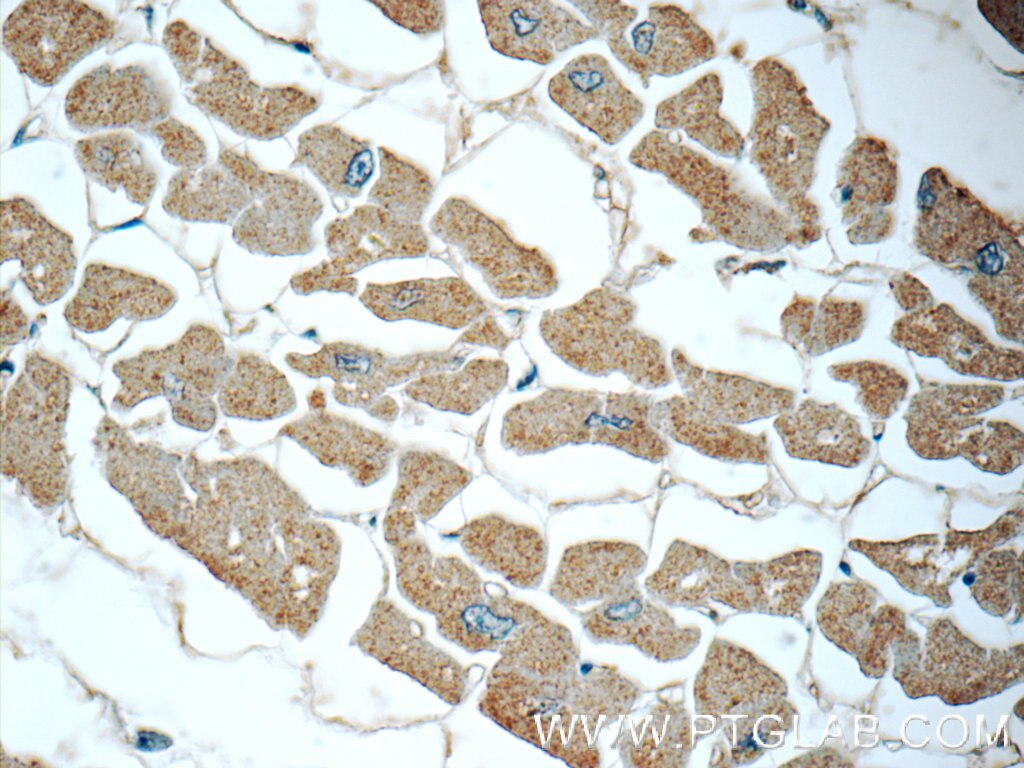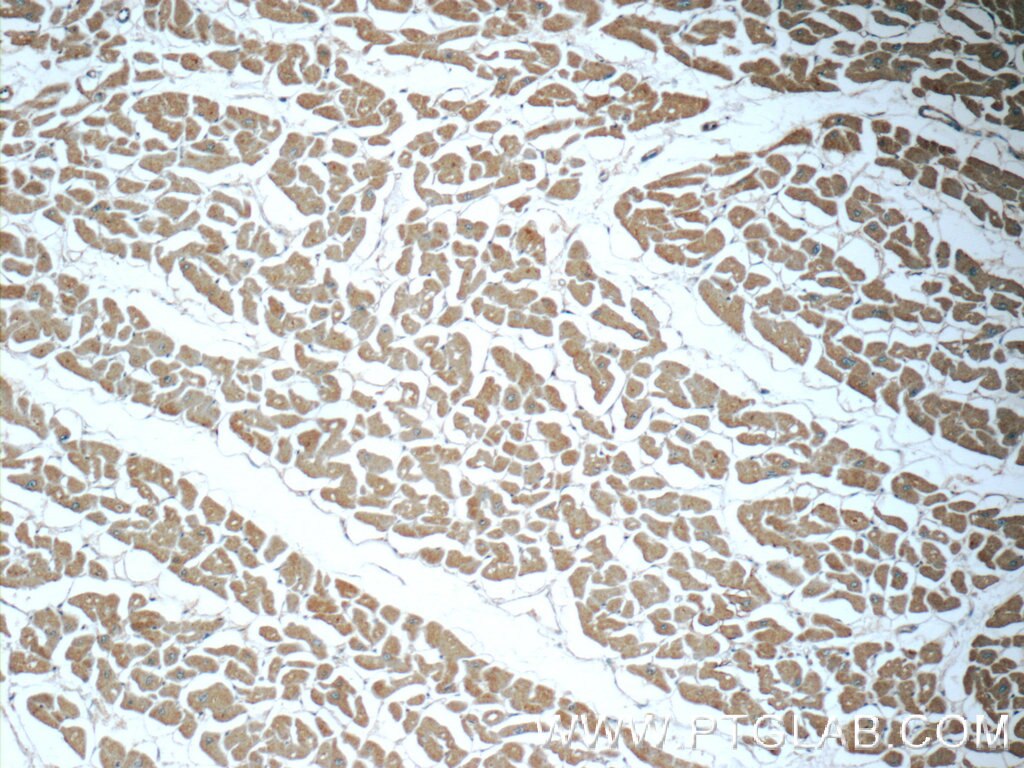- Featured Product
- KD/KO Validated
GSTT1 Polyklonaler Antikörper
GSTT1 Polyklonal Antikörper für WB, IHC, ELISA
Wirt / Isotyp
Kaninchen / IgG
Getestete Reaktivität
human, Maus, Ratte und mehr (2)
Anwendung
WB, IHC, IF, ELISA
Konjugation
Unkonjugiert
Kat-Nr. : 15838-1-AP
Synonyme
Geprüfte Anwendungen
| Erfolgreiche Detektion in WB | humanes Hirngewebe, HepG2-Zellen, Maushirngewebe, Mauslebergewebe, Rattenlebergewebe |
| Erfolgreiche Detektion in IHC | humanes Nierengewebe, humanes Herzgewebe, humanes Lungengewebe, humanes Hautgewebe, humanes Milzgewebe, humanes Hodengewebe Hinweis: Antigendemaskierung mit TE-Puffer pH 9,0 empfohlen. (*) Wahlweise kann die Antigendemaskierung auch mit Citratpuffer pH 6,0 erfolgen. |
Empfohlene Verdünnung
| Anwendung | Verdünnung |
|---|---|
| Western Blot (WB) | WB : 1:500-1:2000 |
| Immunhistochemie (IHC) | IHC : 1:50-1:500 |
| It is recommended that this reagent should be titrated in each testing system to obtain optimal results. | |
| Sample-dependent, check data in validation data gallery | |
Veröffentlichte Anwendungen
| KD/KO | See 1 publications below |
| WB | See 6 publications below |
| IHC | See 5 publications below |
| IF | See 1 publications below |
Produktinformation
15838-1-AP bindet in WB, IHC, IF, ELISA GSTT1 und zeigt Reaktivität mit human, Maus, Ratten
| Getestete Reaktivität | human, Maus, Ratte |
| In Publikationen genannte Reaktivität | human, hamster, Hausschwein, Maus |
| Wirt / Isotyp | Kaninchen / IgG |
| Klonalität | Polyklonal |
| Typ | Antikörper |
| Immunogen | GSTT1 fusion protein Ag8588 |
| Vollständiger Name | glutathione S-transferase theta 1 |
| Berechnetes Molekulargewicht | 240 aa, 27 kDa |
| Beobachtetes Molekulargewicht | 28 kDa, 30 kDa |
| GenBank-Zugangsnummer | BC007065 |
| Gene symbol | GSTT1 |
| Gene ID (NCBI) | 2952 |
| Konjugation | Unkonjugiert |
| Form | Liquid |
| Reinigungsmethode | Antigen-Affinitätsreinigung |
| Lagerungspuffer | PBS with 0.02% sodium azide and 50% glycerol |
| Lagerungsbedingungen | Bei -20°C lagern. Nach dem Versand ein Jahr lang stabil Aliquotieren ist bei -20oC Lagerung nicht notwendig. 20ul Größen enthalten 0,1% BSA. |
Hintergrundinformationen
GSTT1 belongs to the GST superfamily and Theta family. It is a conjugation of reduced glutathione to a wide number of exogenous and endogenous hydrophobic electrophiles. GSTT1 acts on 1,2-epoxy-3-(4-nitrophenoxy)propane, phenethylisothiocyanate 4-nitrobenzyl chloride and 4-nitrophenethyl bromide. It displays glutathione peroxidase activity with cumene hydroperoxide. GSTM1 and GSTT1 has been suggested as a risk factor in various cancers. GSTT1 is important in the detoxification of unidentified xenobiotics in the large intestine.
Protokolle
| PRODUKTSPEZIFISCHE PROTOKOLLE | |
|---|---|
| WB protocol for GSTT1 antibody 15838-1-AP | Protokoll herunterladen |
| IHC protocol for GSTT1 antibody 15838-1-AP | Protokoll herunterladenl |
| STANDARD-PROTOKOLLE | |
|---|---|
| Klicken Sie hier, um unsere Standardprotokolle anzuzeigen |
Publikationen
| Species | Application | Title |
|---|---|---|
Cell Syst Rare Disease Mechanisms Identified by Genealogical Proteomics of Copper Homeostasis Mutant Pedigrees. | ||
FASEB J Gstm1/Gstt1 is essential for reducing cisplatin ototoxicity in CBA/CaJ mice.
| ||
Toxicol Sci Determination of Hepatotoxicity and Its Underlying Metabolic Basis of 1,2-dichloropropane in Male Syrian Hamsters and B6C3F1 Mice. | ||
Drug Metab Dispos Evaluation of hepatic glutathione transferase Mu 1 and Theta 1 activities in humans and mice using genotype information. | ||
Curr Issues Mol Biol COPS5 Conferred the Platinum Resistance in Epithelial Ovarian Cancer | ||
Int J Clin Exp Pathol Different carcinogenic process in cholangiocarcinoma cases epidemically developing among workers of a printing company in Japan. |
